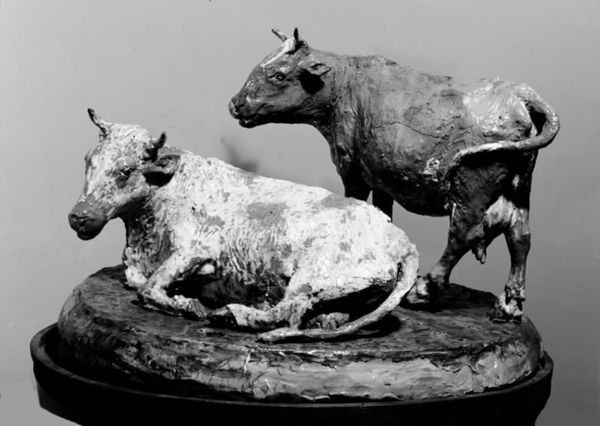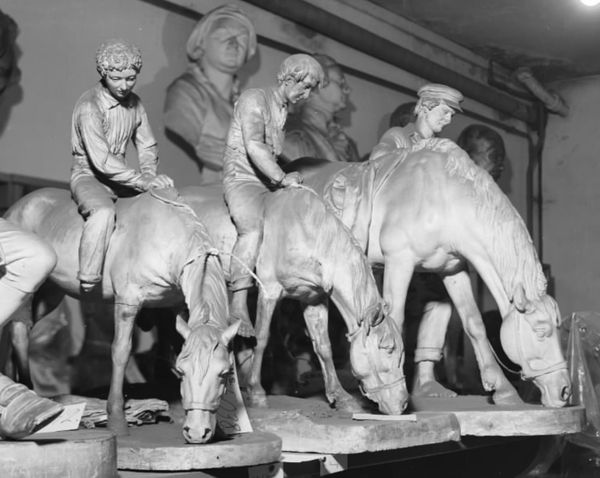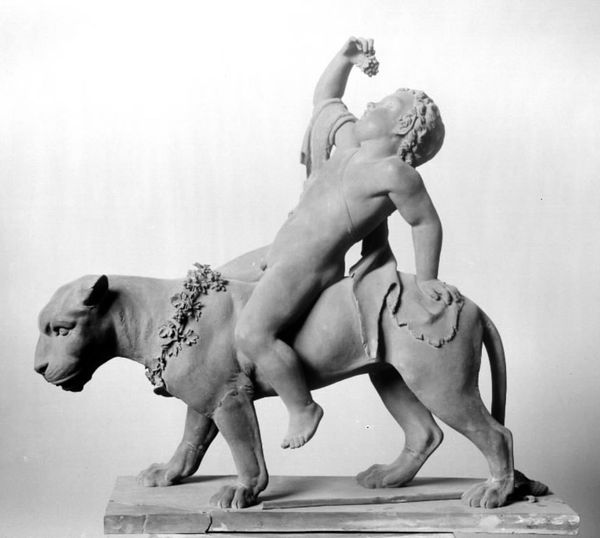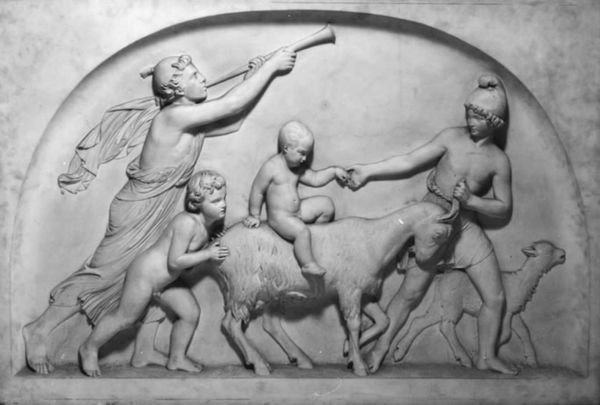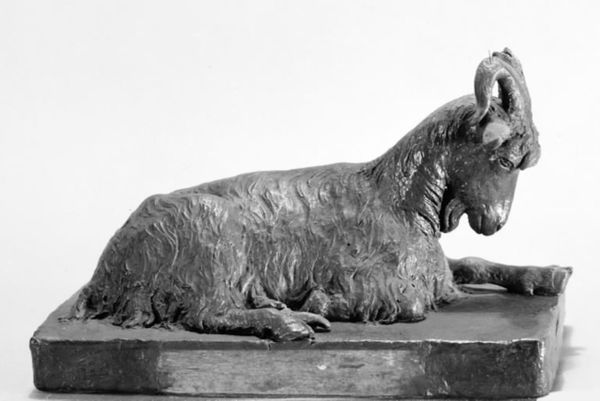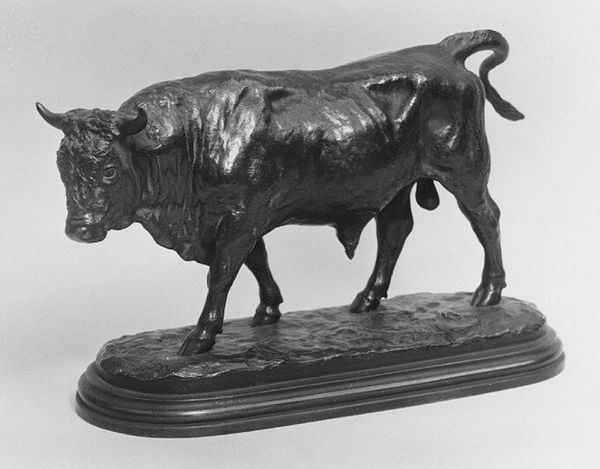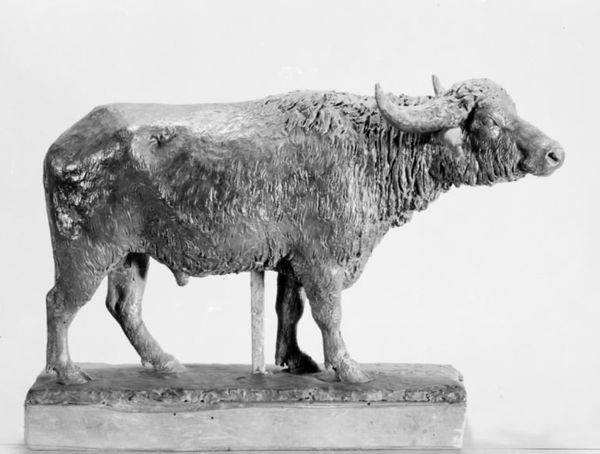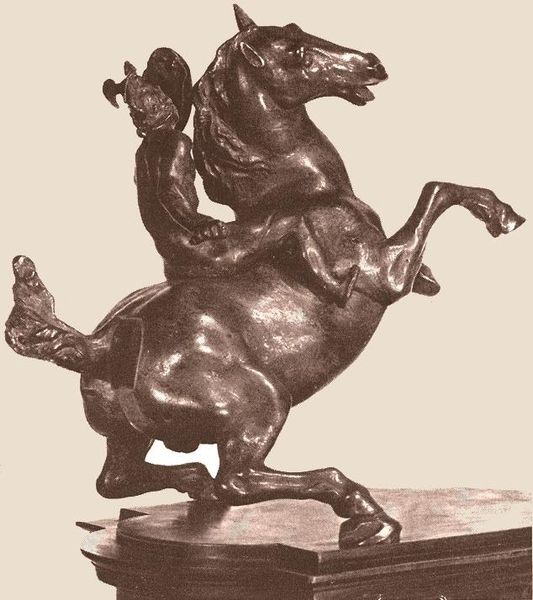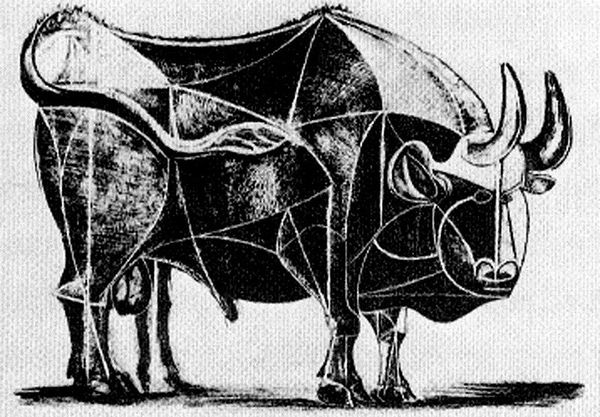
metal, bronze, sculpture
#
narrative-art
#
metal
#
landscape
#
bronze
#
figuration
#
sculpture
#
academic-art
#
monochrome
#
realism
Dimensions: 60 cm (height) x 116 cm (width) x 52 cm (depth) (Netto)
Curator: Here, in gallery six, we find ourselves before Theodor Philipsen's "En karl, der pløjer med to okser," or "A man plowing with two oxen" dated 1904, rendered in bronze. What captures your attention first about this work? Editor: Well, honestly, it’s the sheer grit. You can practically smell the turned earth, feel the sun beating down, and hear the oxen straining. It’s almost a brutal image of man's partnership with beast in the face of the land. Curator: That's a potent read. From a formal perspective, consider how Philipsen uses bronze to convey the weight and texture of the subjects. Look closely at the musculature of the oxen, each line and curve delineating power and endurance. Editor: Absolutely, and I'm struck by the dynamism, even in stillness. It feels caught mid-motion, that endless push and pull of labor, generation after generation. I imagine Philipsen having deep respect and connection with his subjects. What sort of background do we see from him here? Curator: He was, first and foremost, a landscape painter of his time with heavy influences from Impressionism and early Realism. The transition to sculpting allowed Philipsen to express his love for rural scenes in a new medium. His sensitivity and ability to see each ox or each blade of grass allowed him to immortalize simple life scenes and elevate it. Editor: And elevating, it really does, which almost sounds cheesy in the art world, right? It really encapsulates such quiet monumentality from a rather modest subject! There's just an honesty and devotion radiating from it. The formal aspect, the careful rendering, perfectly serves that emotional core. Curator: Indeed. It's an ode to honest labor and perhaps, in its simplicity, an invitation for us to remember our fundamental relationship with the land and those who toil it. Editor: I find myself thinking a lot about labor ethics and human history after encountering something that on the surface looks so simple... Curator: Perhaps this encounter offers more than we realize if we reflect. Thank you.
Comments
No comments
Be the first to comment and join the conversation on the ultimate creative platform.
